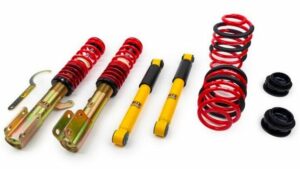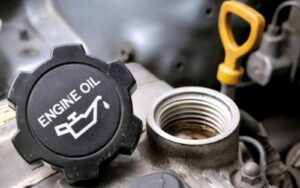It is crucial to know Miles Per Gallon (mpg) for any vehicle before buying it because it’s an expense that buyers should comfortably be able to bear. Different cars have different MPG. It depends on many factors such as the engine’s size, the vehicle’s size (it’s a fact that lighter cars use less fuel), weather conditions, and driving behavior. Hummer is a brand of SUVs and pickups which very popular in the early 2000s. Hummer H1, H2, and H3 models were a commercial success; however, due to increased fuel prices and changes in people’s tastes by 2010, G.M. completely shut down the production of Hummer. However, in 2022 the brand came back by manufacturing electric pickup truck and SUV models sold under the GMC brand as the “GMC Hummer EV.”
Table of Contents
What is MPG
MPG, or miles per gallon, measures how far a car can travel on a single fuel tank. An automobile’s MPG is mostly used to determine how fuel-efficient it is; the higher the MPG, the more efficient the car is. The U.S. Environmental Protection Agency, or EPA, is the government agency approving a vehicle’s MPG ratings.
It is challenging to obtain an exact measurement of a car’s MPG because of how many distinct things might affect it. For instance, MPG might vary depending on the situation and variables like traffic and road conditions. To get a vehicle’s official MPG, the EPA conducts testing over a predetermined series of courses and then averages the results.
The EPA gives each car three different MPG ratings:
Highway MPG is the average fuel economy a car will achieve while moving continuously along an open section of the road, usually at a higher speed.
City MPG is the average rating an automobile will receive in urban driving, where stopping and starting must occur at slower speeds.
Moreover, combined MPG represents the average of both highway and city MPG.
The EPA has increased the number of alternative fuel cars it may test, including electric vehicles, in recent years. These ratings determine how much energy a vehicle uses compared to a gallon of conventional fuel. This enables customers to contrast the fuel efficiency of electric and traditional automobiles.
MPG is a crucial measure to understand while researching potential vehicles. It gives you an idea of how much you can expect to spend on fuel, which allows you to learn about the cost differences between operating various vehicles. When fuel prices are higher, this becomes even more crucial because your budget depends on whatever savings you may make.
MPG can be used to compare different automobiles, but it doesn’t provide any information on actual fuel costs. Nevertheless, based on how far you drive regularly, it is simple to estimate how much you will spend on petrol at various pricing points.
Hummer and Gas mileage
What is the typical hummer gas mileage? The Hummer’s average fuel efficiency varies according to model, year, engine type, road conditions, and driving style. The average fuel economy of the H1 is 10 mpg, that of the H2 is 10 to 12 mpg, and that of the H3 is up to 14 mpg.
Regarding gas mileage, H1s powered by gasoline and diesel engines are very similar. Due to their smaller fuel tanks, the few gas H1s have a reduced range.
The Hummer is not the best car for you if you are concerned about lowering your gasoline costs because the truck’s size necessitates high fuel consumption.
Your fuel economy will, however, get better over time. Your driving style may also impact how many miles your Hummer can travel. The more miles you can travel in a Hummer, the slower your pace must be.
Because of its size and box-like form, the vehicle generates a lot of drag. In such a truck, reaching high speeds necessitates the engine burning more fuel to produce the torque required to achieve your desired speed.
Hummer H1’s MPG
The longest production run belonged to the Hummer H1. In contrast to later versions’ turbo diesel engines, the original trucks had normally aspirated diesel engines. Gas-powered Hummers were debuted in the 1995 and 1996 model years. The majority of H1s, however, were diesel-powered and had poor pavement mileage. Since the H1 was a military vehicle dressed in civilian clothing, this is hardly a major concern. It wasn’t intended to be a racecar. Instead, the H1 was designed to have outstanding off-road performance.
The average fuel economy for the H1 was 10 mpg. Even the rare gasoline-powered models with the Chevy 350 engine could only achieve 7–11 mpg on the highway. Only 10 mpg is offered by the 2006 H1 Alpha, which is regarded as the greatest of all. After monitoring the fuel usage for 1,512 kilometers, users of the 2002 H1 reported receiving an average mileage of 9.6 mpg. A 2003 H1 recorded by another Hummer owner returned an average fuel economy of 10.2 mpg during a 3,612-mile period.
No genuine off-roader or overlander cares about fuel economy when limping along at three mph in the middle of nowhere, which is why the H1 is significantly off-road focused.
Hummer H2’s MPG
Due to the H2’s smaller size than the H1, a smaller engine is needed. The H2, despite being smaller than the H1 in terms of design, falls short in terms of mileage. Users of the Hummer H2 have reported that it gets about 10.5 mpg on average. Depending on the model year, this might range from 9.2 to 12.6 average miles per gallon.
While the 2003 H2’s 6.0 L V8 could only manage 9.6 mpg, the 2009 model year’s 6.2 L V8 engine was capable of 12.6 mpg. The mileage of the H2 is not officially recorded. Vehicle manufacturers are not required to disclose the fuel economy figures of vehicles that weigh more than a specific amount. Because of this, Hummer owners’ experiences can be a great source of information when estimating the mpg that these powerful trucks can get.
Compared to the base trim H2s, the H2 SUT appears to perform better. The H2 SUT achieved an average fuel economy of 12 mpg over 1600 miles in a well-known road test of the automobile by the staff at caranddriver.com. It could go ten mph in the city and 13 mpg on the interstate. That’s quite good for a car weighing more than 6000 pounds.
Hummer H3’s MPG
The H3’s fuel economy ratings are the most precise of all Hummers. With only 4700 pounds, the H3 had amazing fuel efficiency. Due to this, it became a favorite among soccer moms and acquired the sexist moniker “road queen.”
The H3 was made for the pavement and had more luxuries. Its off-roading abilities, however, surpass those of ordinary SUVs.
All H3 models, including those with automatic and manual transmissions, get more than 14 mpg overall. The H3s are the most fuel-efficient Hummers as a result. However, this is understandable given their smaller size, lighter weight, and usage of gasoline engines.
How to improve your hummer mileage?
Owners of Hummers employ a range of tactics to increase fuel efficiency. Here are some that you can use.
Drive carefully
Even though it might not be enjoyable, driving slowly on the highway is a fantastic method to obtain more miles per gallon. The Hummer consumes more Gas as its engine needs more power.
Driving an H1 or H2 at 65 mph puts the transfer case at risk of burning up, and your fuel economy will be appalling. It makes no sense to breach the sound barrier in a large, poorly aerodynamic truck. You might save some money on petrol if you drive slowly.
Invest in synthetic fuel
The mileage of your Hummer can also be impacted by the fuel you use. Owners who paid attention noted differing mpg when they filled up at various gas stations.
This can be a result of the fuel additives. You may increase the range of your Hummer by purchasing synthetic fuel, which delivers more miles per gallon.
Install a tuning chip in the engine
With a SuperChip FlashPac tuner or an alternative, you may increase the mileage of your Hummer. This gadget makes the engine more efficient, giving it better performance and fuel efficiency.
Update the Vehicle
Additionally, several believe that aftermarket tweaks increase mileage. Some people who fitted a Magnaflow Exhaust and a Cold Air Intake could get 3–4 more miles per gallon. The crossbars, spare tire, and other accessories that add to the car’s weight can also be taken out. But be cautious to avoid breaching the law or endangering your safety. Any factor that raises drag can lower fuel efficiency. Take into account the price of any modifications and potential fuel cost savings. Spending thousands of dollars on improvements could be wasted if you don’t intend to retain the car for a long time.
Drive on two wheels
If your Hummer has 4WD, a two-wheel drive will yield better fuel economy. The car gains a lot of weight when it has four-wheel drive (an extra 400 pounds). As a result, greater friction, more drag, and more fuel consumption. You disconnect the engine’s moving parts by switching to a two-wheel drive. This increases mileage by lowering the load and work that the engine must perform.
Obtain a two-wheel-drive Hummer if fuel efficiency is a top priority for you. Use your 4WD only when necessary if you find yourself with one. The two-wheel drive may not be an option in all circumstances, although it should be possible on most Hummers.
Maintain Proper Tire Inflation
Low tire pressure causes more drag between the road and the Hummer, which decreases fuel economy. You can gain one or two miles by ensuring that your tires are always properly inflated. Your tires may also impact the fuel economy. To get the most mileage out of your Hummer, attempt to spend money on premium, terrain-specific tires.
Comparing Hummer with other trucks
Ford F-450 vs. the Hummer H1
The H1 weighs 8,113 pounds at the curb and achieves 10 to 12 mpg depending on speed, model year, and design. This is comparable to the weight of the 8,600-pound Ford F-450 SuperDuty vehicle.
Chrysler Aspen, Jeep Commander, and the Hummer H3
The 4,600-pound 2008 H3 gets an astounding 18 mpg on the interstate and an impressive 14 mpg in the city. This is comparable to the fuel efficiency of the Chrysler Aspen and Jeep Commander for the same model year, which achieve 14 mpg in the city and 19 mpg on the highway, respectively.
According to the information above, the Hummer uses less fuel than trucks of a similar size. Many individuals who criticize the car don’t compare the mileage of other trucks in its class, which permanently tarnishes its image.
Find out how many miles a similar-sized truck can go before you whine about how gas-hungry a Hummer is.
2022 Hummer EV (A comeback of the brand)
In a bizarre turn of events, the gas-guzzling Hummer brand, which General Motors retired in 2010, will reappear in 2022 as a fully electrified sub-brand of GMC. The revived Hummer will show up as a pickup truck, then an SUV. The top engine option for the new pickup has three electric motors and can produce up to 1000 horsepower, has an estimated range of 329 miles per charge, and can accelerate from 0 to 60 mph in 3.3 seconds.
With an estimated 329 miles of driving range per charge, the Hummer EV uses G.M.’s innovative Ultium battery-pack technology. 290 miles were recorded on an all-highway range test at 75 mph. GMC boasts that the Hummer’s 800-volt electrical system has a 350-kilowatt fast-charging capacity and can add 100 miles of range in 10 minutes. The Hummer EV may also charge on standard public charging terminals or at home using a provided adaptor for customers who don’t have any D.C. fast charging stations nearby, but charging times are noticeably slower.
Conclusion
The Hummer H1, H2, or H3 is not for those concerned about gasoline costs. Consider purchasing a Tesla or a Prius if it describes you. The car is inherently gas-hungry due to its weight, size, design, and engine.
If you purchased a Hummer, you need not be critical of its fuel efficiency. It’s not a flaw that the truck uses up so much Gas; it’s part of what makes it so strong.
However, the new Hummer, known as Hummer EV, which will go on sale in the fall of 2022, can significantly reduce gasoline costs as it’s a fully electric vehicle.




